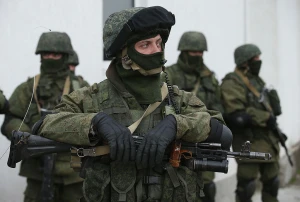
Key features of Russia's most massive attack of the war yet
Instead of marking Ukraine's Independence Day as had been repeatedly warned, Russian forces launched a massive combined attack on August 26. The strike targeted energy infrastructure and other civilian objects using a range of destructive means
Oleksandr Kovalenko, Ukrainian military and political observer with the Information Resistance group, journalist and blogger, speaks about the August 26 missile strike on Ukraine on Obozrevatel.
Chronicle of the attack
The Russian strike on August 26 involved 127 missiles of various types and 109 Shahed-136 kamikaze drones:
- Kh-101/555: 77 missiles
- Kh-22/32: 3 missiles (one shot down)
- Kh-47M2 Kinzhal: 3 missiles (one shot down)
- 9M723 Iskander: 9 missiles (one shot down)
- Kalibr: 28 missiles
- Kh-59/69: 10 missiles
Out of the 109 Shahed-136 kamikaze drones launched, 99 were shot down. Additionally, missiles of the Kh-101/555, Kalibr, and Kh-59/69 types were intercepted 99 times.
In fact, this was the most massive attack in terms of total weaponry, primarily due to the unprecedented deployment of 109 Shahed-136 kamikaze drones.
The first launches of the Shahed-136 kamikaze drones were carried out around 1 a.m. (a very unusual time, as they are usually launched before midnight). The purpose was to make the slow Shaheds match the speed of the subsonic missiles' approach to Ukrainian airspace, and to disperse and exhaust air defense assets at that time.
After 8 a.m., Kh-22/32 missiles were launched, which travel at speeds four times greater than the Kh-101/555. This suggests an effort to time the attacks to coincide with moments when airspace defenses are less prepared or to breach air defenses more effectively.
Around 9 a.m., Russia launched a Kh-47M2 Kinzhal missile.
The final Russian object in Ukrainian airspace, a Shahed-136 drone, was destroyed after 3 p.m.
There has never been such a long period of kamikaze drone shootdowns since the start of the invasion. This is indeed the longest raid in the entire period of the full-scale war, which also demonstrates the difficulty of intercepting a large swarm of Shahed drones due to the limited capabilities of mobile interception groups and the need to reinforce them with an air component.
Features
Given the range of missiles used, it appears that Russia did not employ any particularly special tactics, other than the fact that most of these weapons entered Ukrainian airspace during the day. This daytime targeting might be due to the challenges of using A-50 AEW&C systems for night operations. Consequently, the deployment of kamikaze drones after midnight seems to align with this limitation, aiming to exploit the gap in nighttime targeting capabilities.
It’s worth noting that previous missile strikes by the Russian Federation, such as the attack on July 8, were also carried out during the day. This pattern suggests that Russian forces may have significant difficulties with nighttime missile attacks. If this trend continues, future strikes are likely to follow the same daytime schedule.
The attack on August 26 demonstrated that Russian forces deployed a number of missiles nearly equivalent to their production output since July 8. In other words, they utilized almost all the missiles they had produced during this period.
Why was the strike carried out on August 26? Obviously, it was originally planned for Ukraine's Independence Day. The reason for the postponement of the act of terror could be that in recent weeks the Ukrainian Defense Forces have kept Russian tactical and strategic aviation on their toes with regular raids on airfields within a 2,000-kilometer radius.
This likely explains why Russian forces were unable to fully prepare for the August 24 attack. It's plausible that the Russian command either overestimated their ability to manage the attack or anticipated that if the most intense day for air defense passed without significant incidents, Ukraine could then ease their efforts. However, the former scenario seems more likely.
Conclusions
The Russian Armed Forces have not abandoned their goal of launching a massive combined strike, which was significantly strengthened by kamikaze drones.
Russia has not changed its goals of striking the energy sector and generally targeting civilian objects in Ukraine's rear.
Some of the missiles that were not shot down belong to the category of those that can be destroyed by a limited type of SAM. These are 9M723, Kh-22/32, and Kh-47M2 missiles. The rest were able to penetrate the air defense due to its overload and exhaustion by a large number of air objects.
In the coming days, Russia may conduct reconnaissance strikes, but with limited ammunition. The terrorist attack on August 26 used up most of the missiles that Russia was able to produce at its facilities from July to mid-August.
- News














































